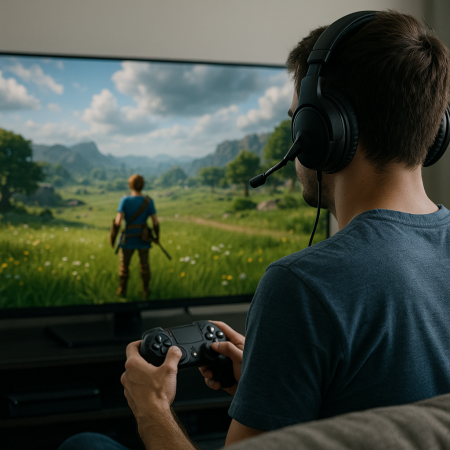Gamers today expect control. They don’t want to follow a fixed path or sit through stories they can’t shape.
What they want are choices that matter, worlds they can change, and mechanics that let them play how they like. Studios are catching on. More games now offer real freedom: custom characters, branching stories, and systems that react to your playstyle. This is about giving players a say in how the game unfolds.

Pexels.com
Bigger Market, Higher Expectations
As gaming grows, so do expectations. With revenue set to pass $189 billion this year according to Newzoo, developers are under constant pressure to deliver games that stand out. Players have more options than ever, and they aren’t shy about saying what works and what doesn’t!
Role-playing games show this clearly. The Witcher 3: Wild Hunt gives players real control over how the story plays out: who lives, who dies, and how entire regions react to your choices. Side quests often feel just as important as the main story, and decisions you make early on can come back hours later. Players go back to explore different outcomes, compare notes, and keep finding new layers.
The same pattern is visible elsewhere, particularly in the online casino industry. According to a recent social casino guide by next.io, top social casinos now offer around 800 different games because variety drives engagement. People want options that match their mood: quick rounds, themed experiences, or new mechanics that feel fresh. The platforms that deliver this are the ones growing fastest.
A similar trend is evident in games like Fortnite. It remains relevant by allowing players to shape the experience themselves, creating maps, inventing game modes, and designing unique skins.
Freedom to Roam and Rule
Games with large, open maps offer players genuine freedom. You’re not locked into a path or told what to do next; you decide. That kind of freedom is a significant reason why open-world games continue to draw players back.
Take Skyrim, for example. More than ten years later, people are still playing it. You can ignore the main story for hours, hunt dragons, get married, or just wander. Mods keep it fresh too, adding new gear, quests, and graphics upgrades. And now that it’s on VR and newer consoles, even more people are jumping in for the first time.
Newer games like Starfield build on that freedom. You can explore planets, build bases, fly your ship, and get involved in big conflicts. What you do actually sticks with you; choices affect the world.
Procedural Design Keeps Things Fresh
Procedural generation means the game builds something new each time you play. It’s not hand-made, but it doesn’t feel random either. That way, replaying never gets old.
No Man’s Sky is the big one here. When it launched, it had problems, but updates turned it around. Now it has billions of planets, all with different weather, creatures, and terrain. You can build ships, run missions, or just explore, and you won’t run out of new things to see.
Players Want Games They Can Actually Keep
Many people are tired of games that disappear. Live-service models often come with time limits, rotating content, and features that vanish. Players want games they can buy once and keep, with content that stays available.
Indie games do this well, too. Stardew Valley has grown steadily with free updates, and players can easily spend hundreds of hours building farms and making friends. It’s offline, relaxed, and doesn’t push microtransactions. It shows that lasting value doesn’t need constant events or monetization.
Player Choice Is Expected Now
Games today aren’t asking players to sit back and follow along. They’re built to hand over the wheel!
Players have made it clear they’re not here for one-size-fits-all. They want to decide what happens, how it looks, and what’s worth their time. And as more studios lean into that, we’re seeing better, more personal games that actually stick with people.

